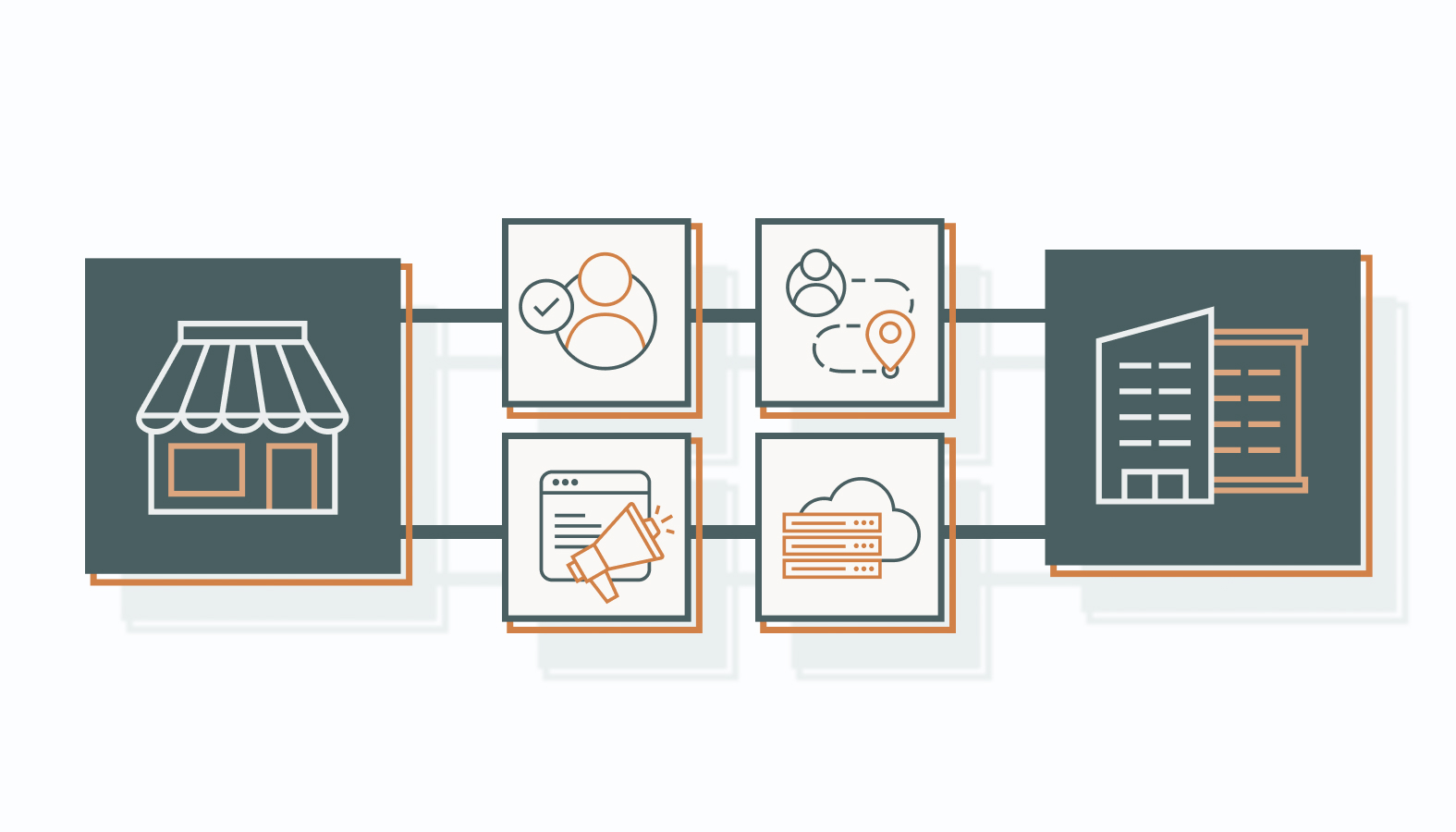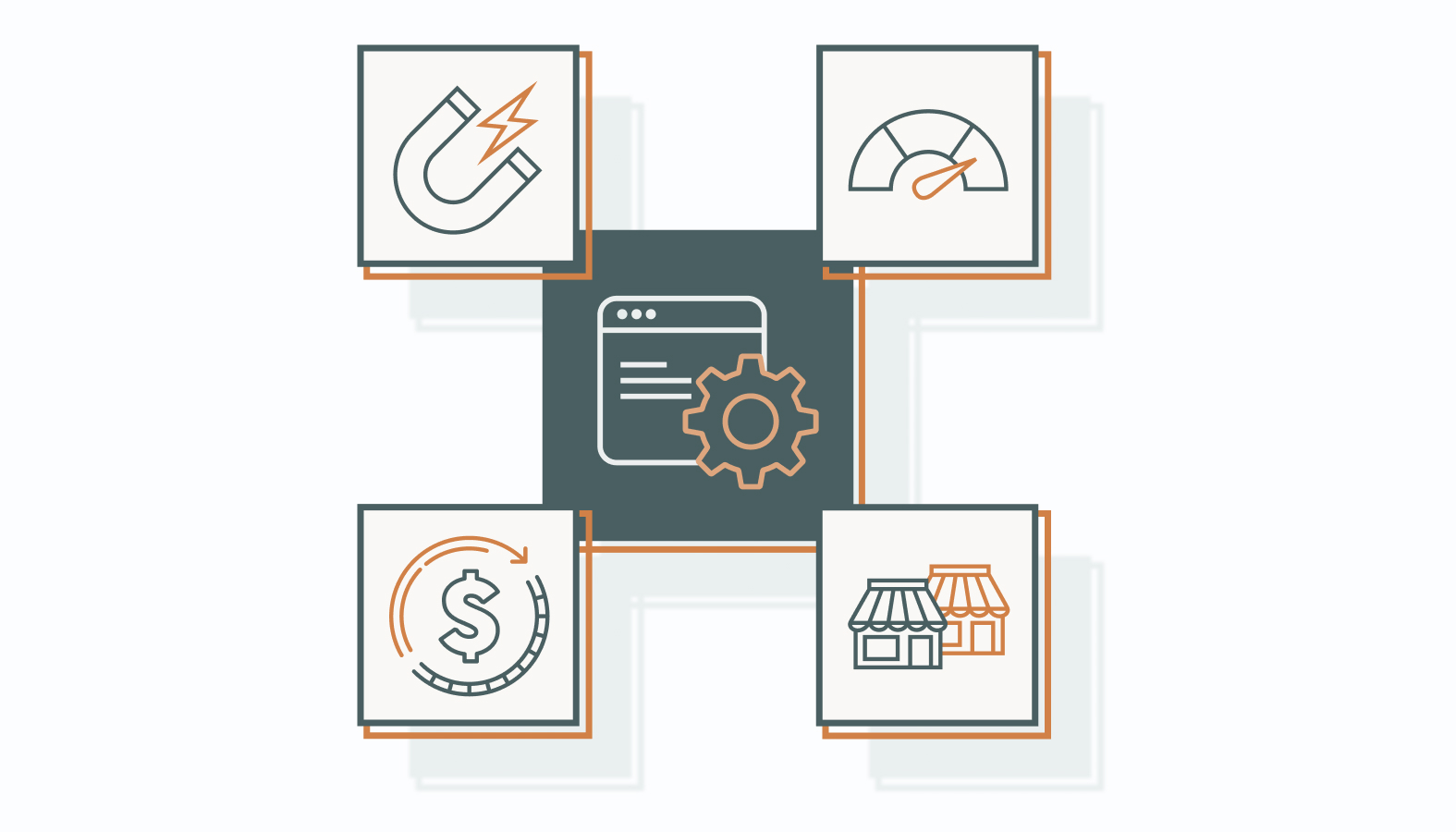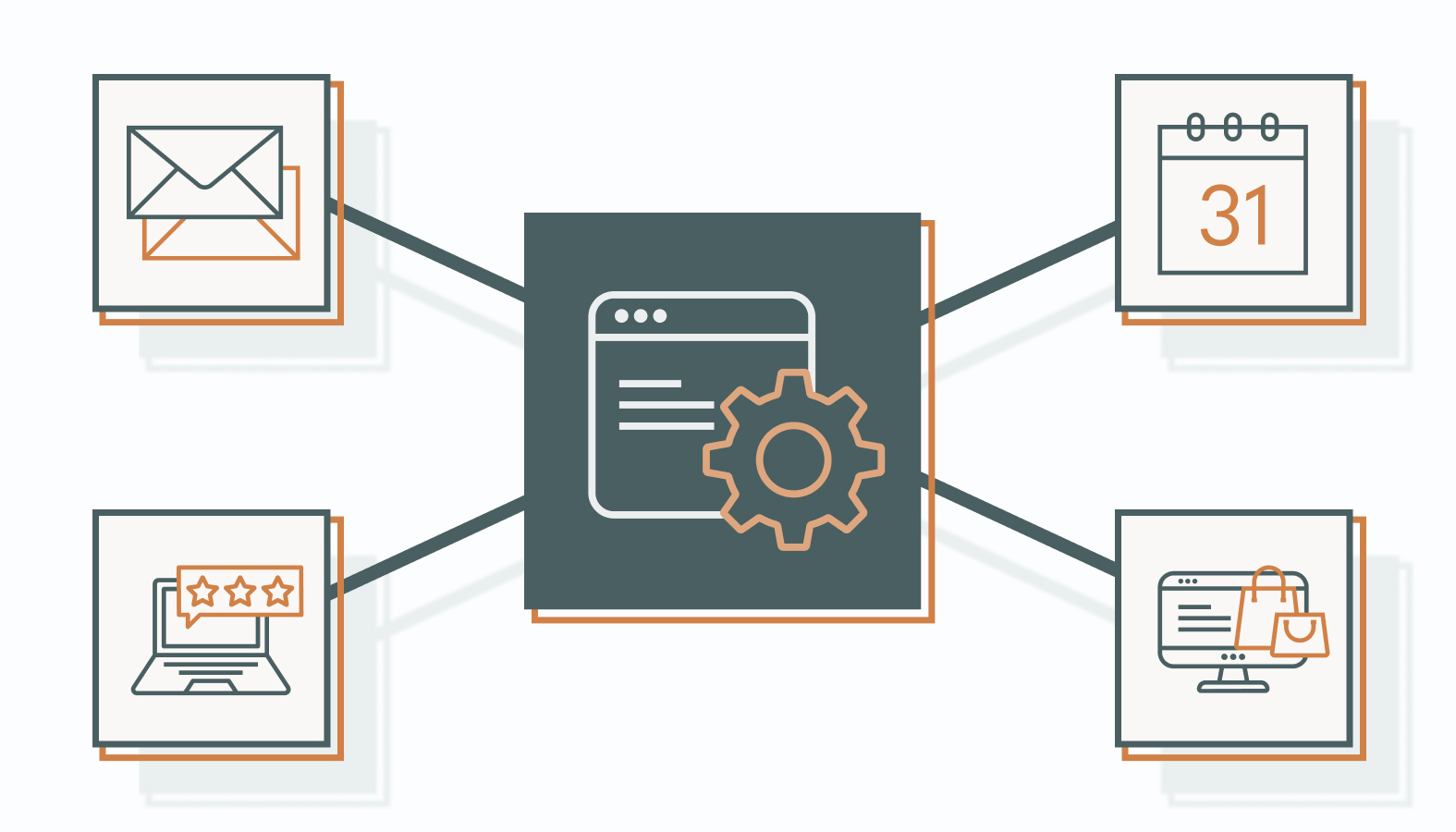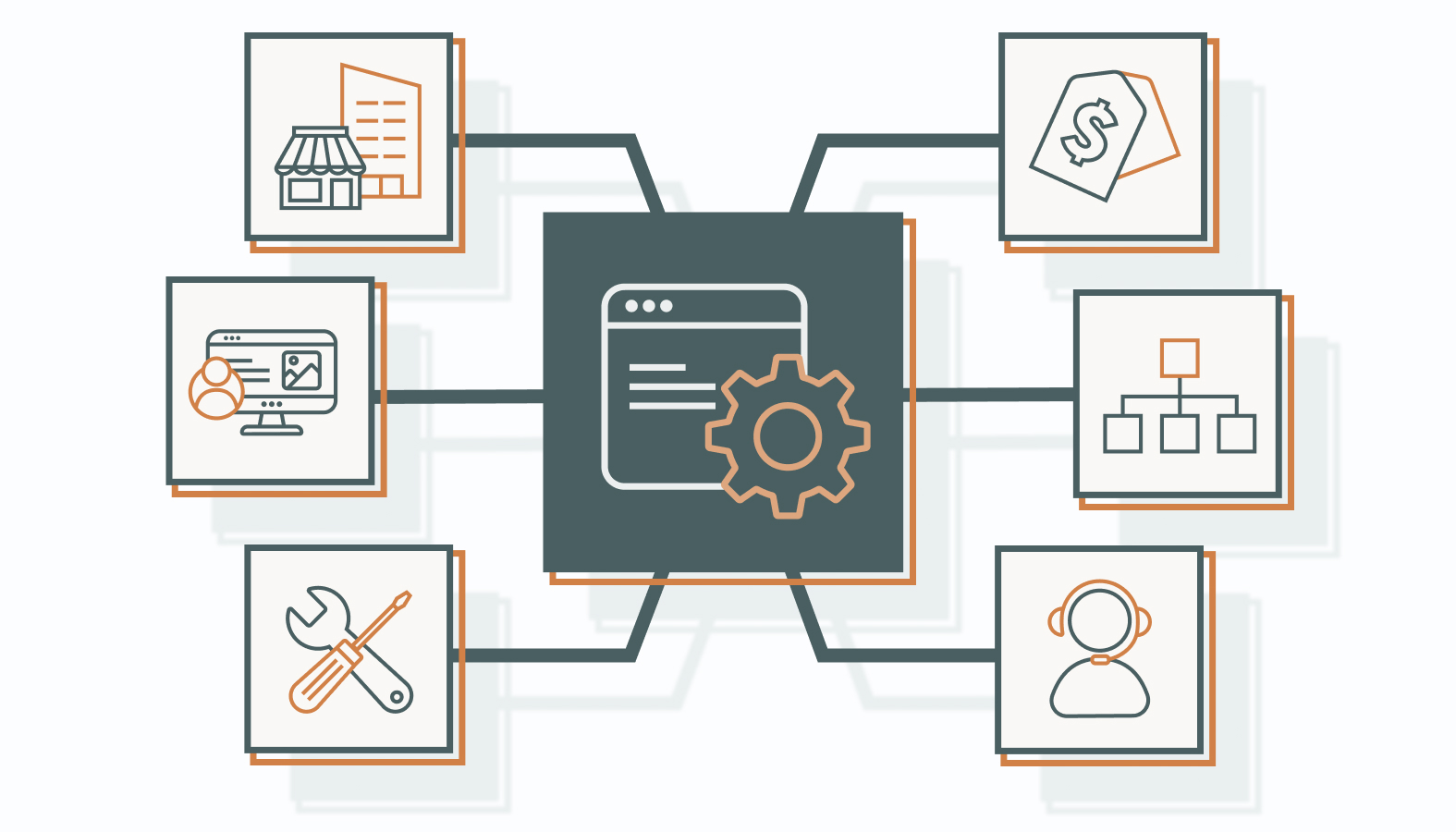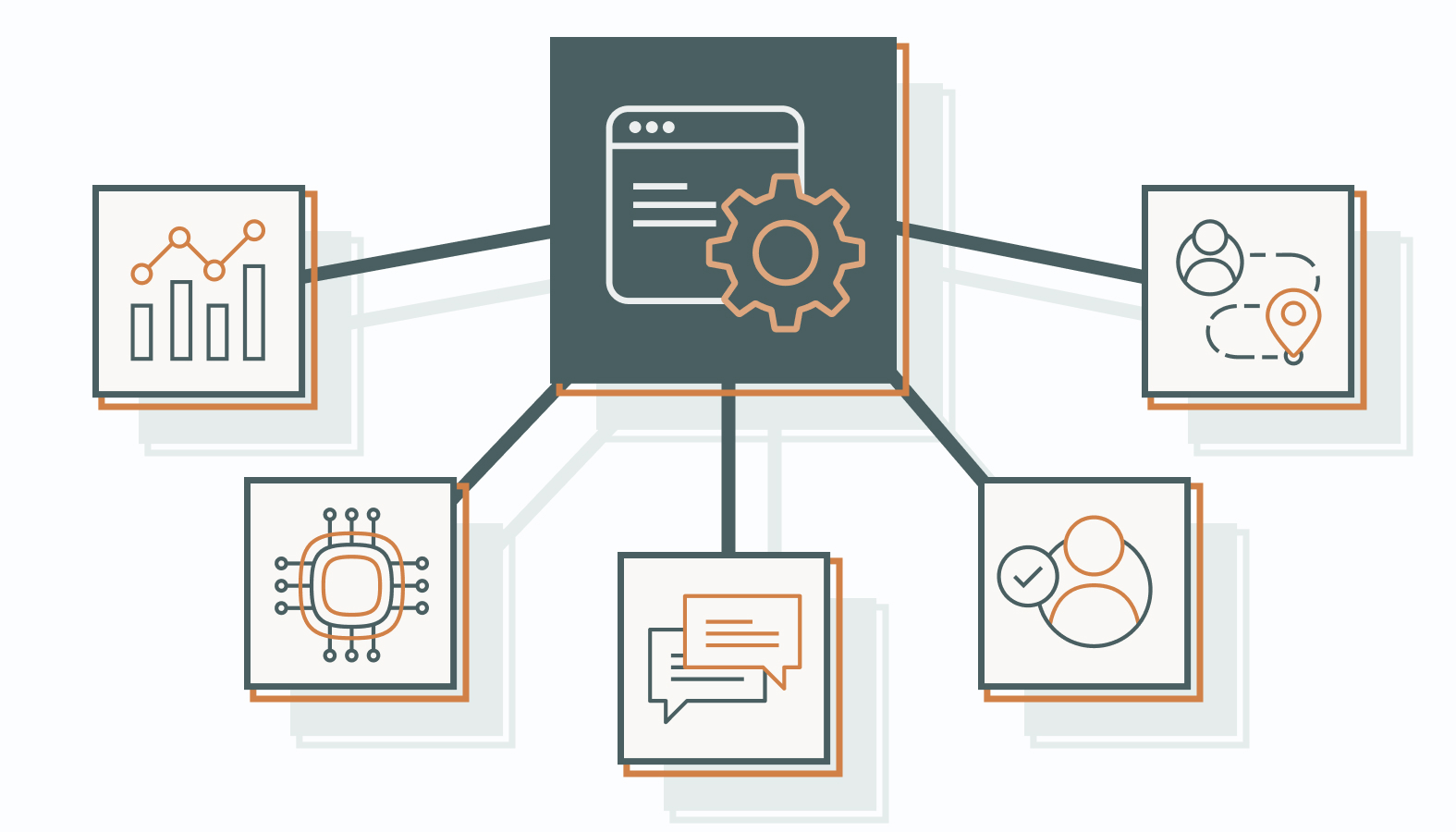In the bustling world of digital marketing, many B2C marketers face not a shortage of time but a challenge of relevance. Every day, consumers are inundated with countless messages, making it challenging to remain prominent in their minds.
Enter B2C marketing automation: a solution that simplifies operations and allows for smarter, faster decisions based on real-time behaviors. It delivers messages that feel custom-crafted for each individual, even as you reach thousands.
If your goal is to transform impulse clicks into lasting loyalty, automation is your launchpad. It’s not just about saving hours; it’s about achieving better outcomes.
This guide explores the essence of B2C automation, how it distinguishes itself from B2B, and strategies for success in a fast-paced, demanding consumer landscape.
What Is B2C Marketing Automation?
B2C (business-to-consumer) marketing automation uses tech-driven systems to execute campaigns, manage customer data, and personalize touchpoints at scale. It’s tailor-made for the rapid dynamics of consumer marketing, where decisions are made in seconds, and loyalty is built over time.
Automation keeps you in sync with consumer behavior. It helps you deliver messages at the right time, with the right tone, and on the right channel without overburdening your team. Instead of being bogged down by repetitive tasks, marketers can focus on strategic, creative, and innovative pursuits.
More importantly, B2C marketing automation gives you a data advantage. It uncovers insights that drive better campaigns, refine customer journeys, and convert guesswork into measurable growth. In a space where consumer attention is fleeting, automation keeps you relevant, responsive, and ahead of the curve. If growth is your target, automation is essential.
Understanding the Divide: B2C vs. B2B Marketing Automation
While both B2C and B2B (business-to-business) may employ marketing automation, they don’t play by the same rules.
A Forrester study reveals that B2B organizations are 30% more likely to use marketing automation than B2C firms, emphasizing the need for strategies tailored to each sector.
To build automation that genuinely makes a difference, you need to know the territory and understand that the terrain looks different depending on whether you’re selling to a person or a procurement team.
Key Distinctions in Marketing Automation
Automation doesn’t function in isolation. It is shaped by your audience (who you’re talking to), their buying habits (how they buy), and what they need to hear.
The starting line for effective implementation is to grasp the differences between B2C and B2B automation.
Understand Audience Profiles
B2C audiences are wide-ranging and driven by individual behaviors. They expect personalized content delivered fast, often across multiple platforms. The aim is to capture attention and foster loyalty swiftly (ideally in minutes).
Conversely, B2B audiences are tighter in scope but higher in complexity. You’re often dealing with entire buying committees and extended timelines. Automation here focuses on nurturing relationships through deep content, consistent touchpoints, and strategic lead scoring aligned with extended sales cycles.
Sales Cycle Length and Complexity
In B2C, speed rules. The buyer’s journey can shift from ad click to checkout in minutes. Automation must support this momentum with quick follow-ups, abandoned cart nudges, and precise segmentation.
B2B, on the other hand, is a longer game. Deals often involve multiple rounds of content consumption, internal conversations, and extensive due diligence. Your automation system must maintain the conversation, delivering the right message at the right time to move each stakeholder forward.
Content and Messaging Strategies
B2C automation thrives on emotional hooks and bite-sized content, such as compelling visuals, short copy, and timely offers. You’re aiming to provoke immediate reactions.
B2B content plays a different role. It’s about education, clarity, and value, utilizing whitepapers, webinars, and case studies to guide buyers through a more methodical decision-making process. Automation ensures these values are consistently delivered, keeping leads engaged over the long term.
Data Utilization and Analysis
Data drives effective automation, but its use varies.
B2C marketers rely on real-time data to personalize experiences at scale, leveraging browsing behavior and purchase history for responsive campaigns.
B2B takes a deliberate approach, using long-term data analysis for strategic planning. Metrics like account engagement and lead scoring trends inform nurturing sequences and pipeline forecasting, with tactics like account-based marketing requiring the precision and patience that automation provides.
Addressing B2C Marketing Automation Challenges
While B2C marketing automation offers immense potential, it also presents unique challenges.
Managing High Volumes of Consumer Data
With B2C, volume is both a gift and a challenge.
Automation platforms need to make sense of millions of data points without getting bogged down. Advanced segmentation and machine learning help distill the chaos into usable insights so campaigns hit the mark instead of the void.
Personalization and Engagement
Generic messaging falls flat in B2C. Consumers expect every touchpoint to feel tailor-made.
Smart automation delivers dynamic content that adjusts based on behavior, preferences, and lifecycle stage. From product recommendations to post-purchase follow-ups, relevance is what drives results.
Maintaining Consumer Privacy
With regulations like GDPR and CCPA, marketers must treat consumer data like gold: valuable and protected.
Automation strategies must prioritize transparency, obtain consent, and ensure data is stored and processed responsibly. Consider trust-building as a brand advantage instead of a legal checkbox.
Adapting to Rapid Market Changes
Consumer behavior is ever-changing, and so must your automation. Successful B2C teams constantly review campaign performance, test new strategies, and adapt in real-time.
Platforms with flexible architecture and robust analytics allow quick pivoting, keeping brands relevant, responsive, and ahead of the curve.
Benefits of B2C Marketing Automation
Marketing automation is a proven performance driver for B2C businesses navigating today’s hyper-competitive digital landscape.
According to Invesp, 80% of companies saw a spike in leads and conversions after adopting automation. This impact isn’t accidental. It occurred because automation scales what works, trims what doesn’t, and creates a marketing engine that exceeds consumer expectations.
Drives Deeper Customer Engagement and Loyalty
Personalization goes beyond using a first name in an email. Automation allows businesses to craft messages that align with individual behaviors, timing, and intentions, transforming generic outreach into meaningful engagement. This precision builds trust, makes people feel valued, and converts casual buyers into loyal patrons.
For example, tailored product suggestions, follow-ups triggered by real actions, and timely messages like birthday offers.
When done right, automation builds a feedback loop of positive experience and repeat business.
Improves Operational Efficiency and Team Productivity
Automation eliminates grunt work, enabling teams to focus on strategic impact. It handles recurring tasks like campaign deployment, social media scheduling, lead scoring, and performance tracking, all while reducing errors.
Netflix’s recommendation engine exemplifies this by using automation to deliver desired content, resulting in higher engagement and longer view times. E-commerce leaders similarly leverage automated segmentation for precise targeting, achieving higher conversions without sprawling marketing teams.
Increases ROI Through Smarter Resource Allocation
Efficiency is just the start. Automation delivers measurable business results across the board. Return on investment improves, customer lifetime value increases, and marketing teams can finally scale without inflating overhead.
Amazon’s use of automation in its product recommendation engine is a prime example. It doesn’t just move inventory; it improves customer satisfaction by making shopping easier and more relevant. Less friction, more sales, and stronger retention equals the kind of compound growth automation is built for.
Delivers a Competitive Edge in the Market
Speed matters in marketing, as do timing, adaptability, and execution. Automation allows businesses to react in real-time and test new ideas without getting buried in logistics. It also opens the door to dynamic content strategies, predictive modeling, and smarter workflows that evolve with the market.
Brands that embrace automation aren’t just reacting faster. They’re shaping customer expectations while competitors are still writing briefs. With automated insights and tailored experiences, they gain ground while others chase relevance.
Essential Components of B2C Marketing Automation
According to MarketsandMarkets, the global marketing automation market is projected to hit $8.42 billion by 2027. That growth signals more than adoption; it reflects a shift in how companies create relevance, deliver personalization, and scale intelligently.
Businesses increasingly rely on automation for key marketing tasks such as:
1) Email Marketing Automation
Email remains a B2C marketing staple, but automation enhances its precision. With the correct setup, businesses can automatically send hyper-personalized messages based on customer behavior, demographics, and purchase history, ensuring each message serves a purpose, whether it’s a welcome sequence, product recommendation, or post-purchase check-in.
Dynamic content adapts to recipients in real-time, improving open rates, conversions, and the overall customer experience.
2) Social Media and Content Scheduling
Your social feed doesn’t need to be a 24/7 treadmill. Automation tools like Hootsuite and Buffer let teams plan, post, and pivot without babysitting the publish button. Pre-scheduled content ensures you stay active even when your team is deep in strategy mode.
Beyond convenience, these tools offer analytics to fine-tune timing and content performance. Choose a scheduler that syncs with your brand’s key platforms and build a posting cadence that matches when your audience is actually paying attention.
3) Customer Feedback and Reviews Collection
Customer insight is gold, and automation is the most efficient way to mine it. Post-purchase surveys, automated review requests, and sentiment tracking tools help you capture the customer’s voice at scale.
Platforms like Trustpilot and SurveyMonkey streamline this process, keeping the data structured and actionable. Whether you’re iterating on products or refining support, this feedback loop becomes a strategic asset. The faster you gather and act on feedback, the sharper your competitive advantage.
4) Managing Abandoned Carts and Upselling
Cart abandonment is a leaky bucket. Automation patches the holes. Tools like Shopify and WooCommerce offer plug-and-play workflows that trigger reminders, offer discounts, or surface FAQs to nudge customers back to checkout.
But that’s just the starting point. Smart upselling uses data from past purchases to recommend complementary items or bundles. It’s about adding value at the right moment. If done right, these automations recover revenue and increase order value and customer lifetime value without stretching your resources.
Choosing the Right B2C Marketing Automation Platform for Your Business
Embracing B2C marketing automation is wise, but choosing the right platform is critical. The platform you choose will either accelerate your marketing strategy or become a costly way to stay stuck.
This decision isn’t one-size-fits-all. Small to mid-sized businesses need solutions that match their scale, adapt to growth, and integrate seamlessly into their tech stack. Focus on these essentials when selecting a platform:
- Scalability: Growth is the goal. Choose an automation platform that scales with you, handling customer volume, data complexity, and cross-channel campaigns without forcing untimely migrations.
- Ease of Use: Your time is valuable. Look for intuitive interfaces, drag-and-drop builders, and streamlined workflows. The platform should complement your brainpower, not demand a second job.
- Key Capabilities: Advanced email automation, real-time segmentation, A/B testing, smart CRM syncing, and dynamic customer journeys are crucial. Additional features like social media scheduling, landing pages, and predictive analytics can sharpen your edge.
- Pricing Transparency: Consider costs beyond the initial payment. Understand feature gating, usage caps, and future pricing to avoid surprises.
- Integration Readiness: Your marketing ecosystem relies on connected tools. Strong API support and plug-and-play integrations are essential for efficiency and clean data visibility.
- Support and Resources: Reliable support and resources are vital. Prioritize platforms with robust help centers and active communities for quick problem resolution.
Here’s a short list of platforms that regularly punch above their weight for small to mid-sized teams:
- ActiveCampaign: A strong contender for those who want powerful automation, built-in CRM features, and a user-friendly experience.
- Klaviyo: Built with ecommerce in mind. Perfect for businesses using platforms like Shopify, with high-performing email and SMS tools tied to customer behavior.
- Mailchimp: A flexible entry point with solid automation and a familiar interface. Ideal for lean teams or those just beginning to scale.
- HubSpot (Marketing Hub Starter or Professional): This all-in-one solution offers serious horsepower and depth. You can skip the enterprise price tag if you stick to the right tier.
No platform is magic out of the box. The real power comes from how well it integrates across your tech stack. When your CRM, email system, ecommerce backend, and analytics tools work together, your automation strategy becomes a competitive advantage.
Deciding which platform and setting it all up can feel overwhelming. Start by outlining your goals, use cases, and budget. Then, take platform demos seriously: get your hands dirty, test real scenarios, and assess how they fit your daily workflow.
Successful B2C Marketing Automation Examples
When executed well, B2C marketing automation delivers experiences that keep customers returning. Here’s how standout brands succeed:
Designing Effective Welcome and Onboarding Campaigns
First impressions last. An automated welcome or onboarding sequence should feel less like a corporate handshake and more like a guided tour from someone who knows exactly what you need.
Personalized messages using customer names and behavior-based segmentation are non-negotiable. Go beyond the basics by incorporating dynamic content like short videos, interactive guides, or exclusive first-time perks. Then, stack the value.
Build an onboarding email sequence that walks new customers through your product or service in stages. Each touchpoint should create momentum, anticipate their next question, and remove friction before it even exists.
Crafting Seasonal and Event-Driven Campaigns
Seasonal and event-driven automation ensures relevance, but timing is crucial.
The best brands launch these campaigns with precision. Whether it’s the holiday rush, summer sales, or back-to-school, automation ensures your audience gets the right message when they’re most ready to act.
Furthermore, use audience segmentation tools to tailor your message to different buyer personas, and then schedule sends to match buying patterns.
Platforms like Klaviyo and Mailchimp can handle the backend. Your job is to ensure the creative speaks to the season and the segment. Pair relevance with urgency, and you’ve got a campaign worth clicking.
Building Engaging Customer Loyalty Programs
An automated loyalty program does more than reward purchases; It builds emotional equity and turns customers into ambassadors.
Effective programs create a journey. Tiered rewards, point systems, birthday surprises — these aren’t gimmicks. They’re psychological triggers that reinforce habits and deepen brand affinity. A customer who earns points for referrals, reviews, or social media engagement is a customer investing in your ecosystem.
Smart brands tailor rewards based on purchase history, browsing behavior, and frequency of engagement. Starbucks didn’t dominate the loyalty game with free coffee alone. They built a system that feels personal, effortless, and valuable.
Future Trends in B2C Marketing Automation: What Small Businesses Should Watch For
The B2C marketing automation space is evolving fast, and staying informed is key. Small businesses should watch these trends to strengthen connections and drive consistent growth.
- Hyper-Personalization and Predictive Analytics: We’ve graduated from “Hi [First Name].” What’s next is personalization that actually anticipates behavior. Artificial Intelligence (AI) and predictive analytics now track browsing patterns, past purchases, and engagement signals to surface the right offer or message before the customer even looks for it. Relevance moves from reactive to proactive—and that’s a competitive edge.
- AI and Machine Learning Integration: Automation is no longer just rule-based triggers. AI now fuels real-time content generation, intelligent segmentation, optimized send times, and natural-sounding chatbot conversations. Smart systems work behind the scenes to serve better experiences, free up your team, and scale without sacrificing precision.
- Conversational Marketing and Chatbots: Customers expect real-time answers. Chatbots and live chat integrations are non-negotiables. The best ones now guide product discovery, handle transactions, and respond across your site, social, and messaging platforms. It’s instant, personal, and frictionless and should be the new baseline.
- Unified Customer Profiles (CDPs): Disjointed data leads to wasted spend. CDPs unify customer interactions across all channels into a single, dynamic profile. That means better targeting, fewer missed opportunities, and campaigns that reflect precisely what customers want. For small businesses, it’s a smarter way to stretch every dollar.
- Increased Focus on Customer Journey Orchestration: Customer journeys aren’t linear, and automation shouldn’t be either. Modern platforms let you design adaptive, multi-channel experiences that shift based on real-time behavior. A customer clicks an email, browses a category, abandons cart? The next step adjusts instantly. This level of fluidity keeps customers moving forward—on their terms.
These trends might sound like something out of a sci-fi movie, but they’re already reshaping how small businesses compete, connect, and convert. Brands that act now build momentum, while the ones that wait play catch-up.
Your B2C Marketing, Automated and Humanized
In today’s crowded digital landscape, smarter, more human messages win. B2C marketing automation enhances every interaction through precision campaigns, timely follow-ups, and data-driven decisions, resulting in marketing that’s personal, efficient, and scalable. It’s how modern brands build loyalty, boost ROI, and stay agile.
But knowing the potential and actually using it? Two very different things.
Why You Need a Fractional Marketer to Bridge the Gap
Mastering marketing automation doesn’t happen overnight. A fractional marketer acts as a part-time CMO, providing senior-level strategy and execution without the full-time overhead.
Here’s how they drive results:
- Strategy: Align automation with business goals and convert customer journeys.
- Tech Setup: Select the right platform, integrate systems, and avoid costly errors.
- Campaigns: Launch impactful flows like welcome, cart recovery, and loyalty nurturing.
- Data: Turn performance into revenue-driving decisions.
- Pitfall Prevention: Avoid common missteps like over-automation or poor segmentation.
- Future-Ready: Stay ahead of trends like AI personalization without doing it all yourself.
A fractional marketer ensures automation works for your business’s unique goals and structure.
Ready to Stop Guessing and Start Growing?
B2C marketing automation is no longer a “nice to have.” To scale smarter, you must automate effectively.
If you’re ready to automate with intention and keep the human touch, bring in a fractional marketer who understands the tech, the tactics, and how to make it all click.
Schedule a candid conversation with one of our experts. Let’s transform your marketing from a time-sink into a growth engine.

